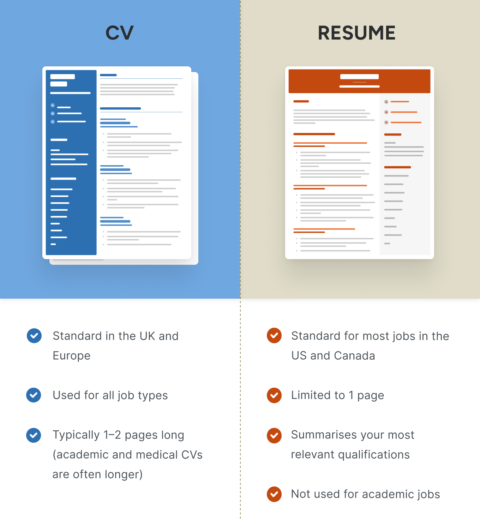In the intricate tapestry of job applications, crafting a compelling resume is akin to weaving a spellbinding narrative that captivates potential employers. Each section serves as a thread, contributing to the larger image of the candidate’s professional persona. Among the most pivotal components are the elusive resume bullets—brief snippets designed to encapsulate experience, skills, and accomplishments. However, an enduring conundrum looms: how does one convey value when quantitative metrics are absent? This discourse will unravel strategies to articulate achievements and capabilities without numerical data, thus illuminating the pathway to portraying professional worth.
Typically, performance metrics reign supreme in the hallowed halls of resume writing. Numbers like “increased sales by 30%” or “managed a team of 10” amplify the impact of statements by providing irrefutable evidence of past successes. Yet, what of the candidate who has not had access to quantifiable results? Are they consigned to the shadows, their story left untold? Not at all. Although the void left by the absence of metrics can appear gaping, a variety of narrative techniques and descriptive language exist to project value persuasively.
First and foremost, emphasizing soft skills can dramatically elevate a resume’s appeal. Soft skills—such as leadership, communication, adaptability, and problem-solving—are often the intangible qualities that differentiate one candidate from another. Codifying these attributes requires precise language and concrete examples, akin to painting a landscape without relying solely on colors but rather through the use of intricate brushstrokes that evoke emotion and connection.
Consider the art of story-telling. Every bullet point can be transformed into a mini-narrative that centers around specific situations or challenges that were navigated. For instance, rather than stating “Communicated effectively with team members,” one might articulate, “Facilitated weekly cross-departmental meetings to foster collaboration and enhance information flow, resulting in more cohesive project outcomes.” Here, what lacks in numerical evidence is compensated for by illustrating a scenario that demonstrates the candidate’s role, initiative, and emotional intelligence.
Moreover, employing vivid action verbs can enrich the narrative quality of resume bullets. Words like “spearheaded,” “orchestrated,” and “cultivated” infuse energy and dynamism into descriptions. The use of these high-impact verbs not only adds weight to the statements but also evokes curiosity in readers. For instance, instead of “handled customer inquiries,” one could write, “orchestrated customer engagement strategies that fostered positive client relationships.” This transformation not only sounds more compelling but helps paint the candidate as proactive and resourceful.
Another powerful technique involves aligning past experiences with the targeted role. Drawing direct parallels between previous responsibilities and the company’s requirements can articulate competency vividly. For example, if applying for a marketing position but lacking quantitative data from past roles, a candidate might frame their experience in terms of relevant tasks. “Conceptualized and executed innovative social media campaigns that enhanced brand engagement, leading to increased visibility in competitive markets.” Here, even without hard figures, the implication of success is tantalizingly clear.
Incorporating qualitative outcomes into resume bullets further enhances narrative depth. The qualitative impact of projects—such as “Improved team morale,” “Enhanced customer satisfaction,” or “Strengthened stakeholder relationships”—can serve as robust indicators of success that resonate with hiring managers. Painting a picture of how contributions enhanced the workplace environment or achieved strategic goals adds layers to the narrative and illustrates value without explicit numbers.
Anecdotal evidence can also serve as a compelling tool when describing experiences. A short reflection on a notable project or experience can demonstrate adaptability, creativity, and initiative. Substituting a metric-centered accomplishment with a brief anecdote can weave the unique story of a candidate’s career. For instance, “During a crucial product launch, I navigated unexpected challenges by innovatively restructuring our approach, which ultimately led to a successful rollout.” This approach humanizes the resume, showcasing the candidate’s resilience and problem-solving capabilities.
To further embellish the narrative, consider the inclusion of industry-relevant keywords. As employers often sift through resumes to find specific competencies, strategically peppering the narrative with keywords enhances visibility and demonstrates industry knowledge. By infusing these terms throughout the bullet points—such as “project management,” “strategic planning,” and “risk assessment”—the candidate underscores their fit for the role without relying heavily on metrics.
Finally, maintaining a cohesive and succinct format is essential. Each bullet should flow naturally into the next, forming an easy-to-follow narrative. Brevity is vital, but clarity should never be sacrificed. Both short and long sentences can be juxtaposed effectively to maintain the reader’s interest while conveying a rounded perspective of one’s qualifications.
In the competitive arena of job applications, writing compelling resume bullets without metrics can indeed seem daunting. However, by focusing on soft skills, painting vivid narratives, employing strong action verbs, and incorporating qualitative outcomes, candidates can reveal their worth—detracting from the absence of quantifiable results. Ultimately, resumes become more than mere documents; they transform into vibrant stories that depict a candidate’s potential, creativity, and promise in their professional journey.




